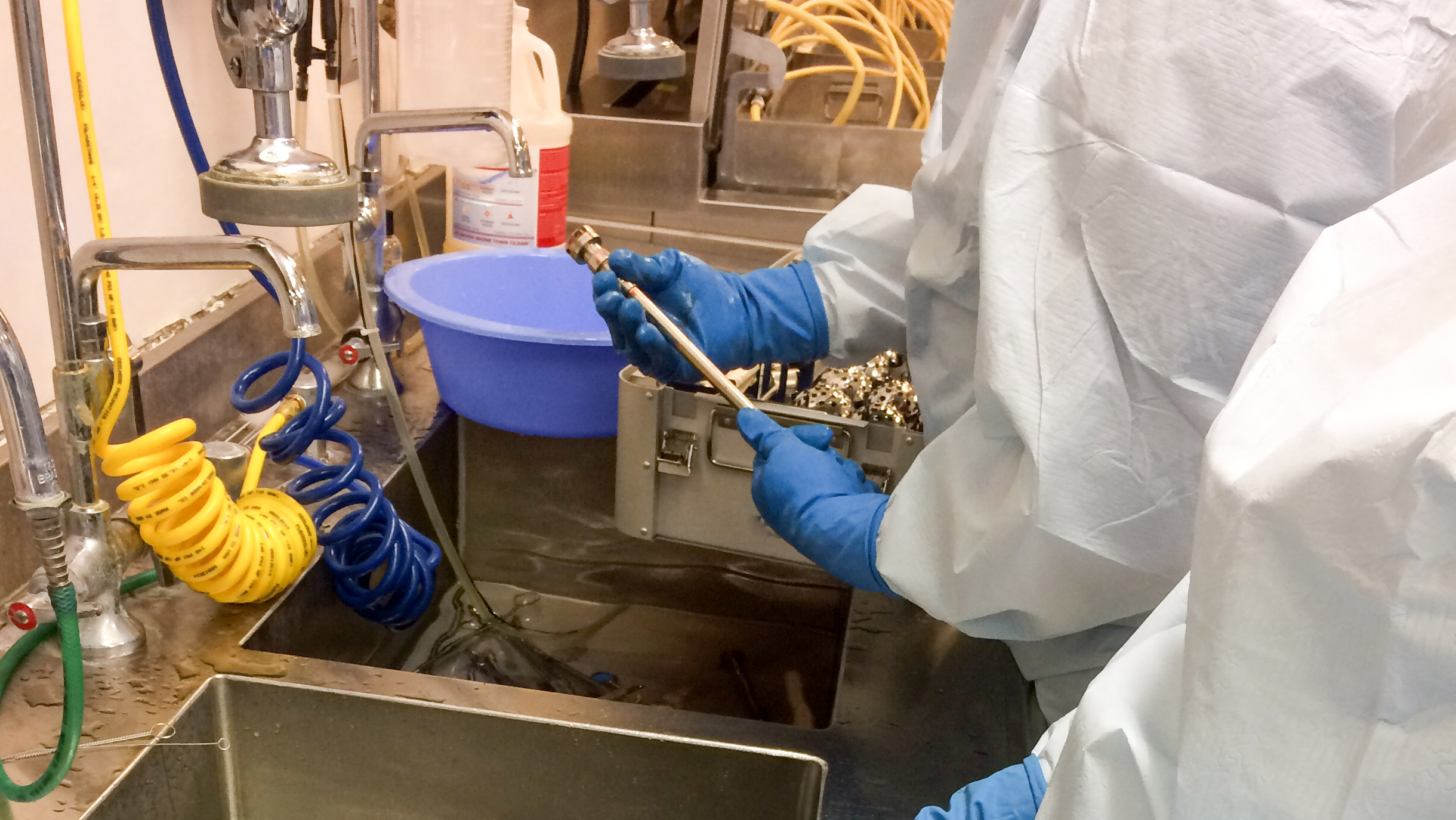
Sterile processing personnel who handle reusable medical instruments may be exposed to patient tissue, blood, and fluids even when they are outfitted in the recommended personal protective equipment (PPE).
That’s according to an evaluation of PPE effectiveness for endoscope reprocessing staffers conducted by Cori L. Ofstead, president and CEO of Ofstead & Associates, and lead author of a paper published this month in the American Journal of Infection Control.
The pilot project found that routine reprocessing activities generated “substantial” splashing, with droplets dispersed up to five feet away from decontamination sinks, according to the research. Currently recommended PPE did not adequately protect sterile processing department personnel from exposure to clean water and cleaning solution during simulated activities. That water “would be presumed to be highly contaminated during normal daily activities,” Ofstead and her co-authors write.
The research was conducted by attaching moisture-detection paper to environmental surfaces and PPE in a large, urban hospital. Reprocessing personnel then simulated routine reprocessing tasks.
Given these findings, according to the authors, more research is needed to support the development of evidence-based guidelines and instructions for safely reprocessing medical instruments. The Association for Professionals in Infection Control and Epidemiology agrees.
“The results from this important real-world evaluation establish the need for additional research by auditors, regulators, and other decision makers to reassess the guidelines for personnel exposure and environmental contamination due to splashes generated in instrument processing areas,” APIC President Ann Marie Pettis said in a recent interview with Healthcare Hygiene Magazine.
The findings, industry observers say, have implications for thousands of sterile processing personnel at hospitals, clinics, and ambulatory surgery centers. That includes the nearly 40,000 members of the International Association of Healthcare Central Service Materiel Management (IAHCSMM), the professional association for certified sterile processing professionals.
Until more research can be done, Pettis recommended the following measures in her Healthcare Hygiene Magazine interview:
In a July 2021 webinar on this subject, Ofstead noted that although more research is required, perhaps even double layers of PPE are “needed from head to toe.”
“Do you think that the blood, tissue fragments, and bodily fluids stay nicely contained in transport basins and sinks?” she asked.
Endoscope channels must be scrubbed during the manual cleaning phase of disinfection, before being placed in an automated endoscope reprocessor. During the manual clean of a ureteroscope, Ofstead reported, splashing was seen up to five feet away from the sink. Droplets were found on the reprocessing technician from their face mask to their shoe covers.
That webinar includes recommendations for setting up a reprocessing suite and best practices for protecting reprocessing personnel from splashing.
Ofstead & Associates webinars can be found at https://ofstead.elevate.commpartners.com/.


